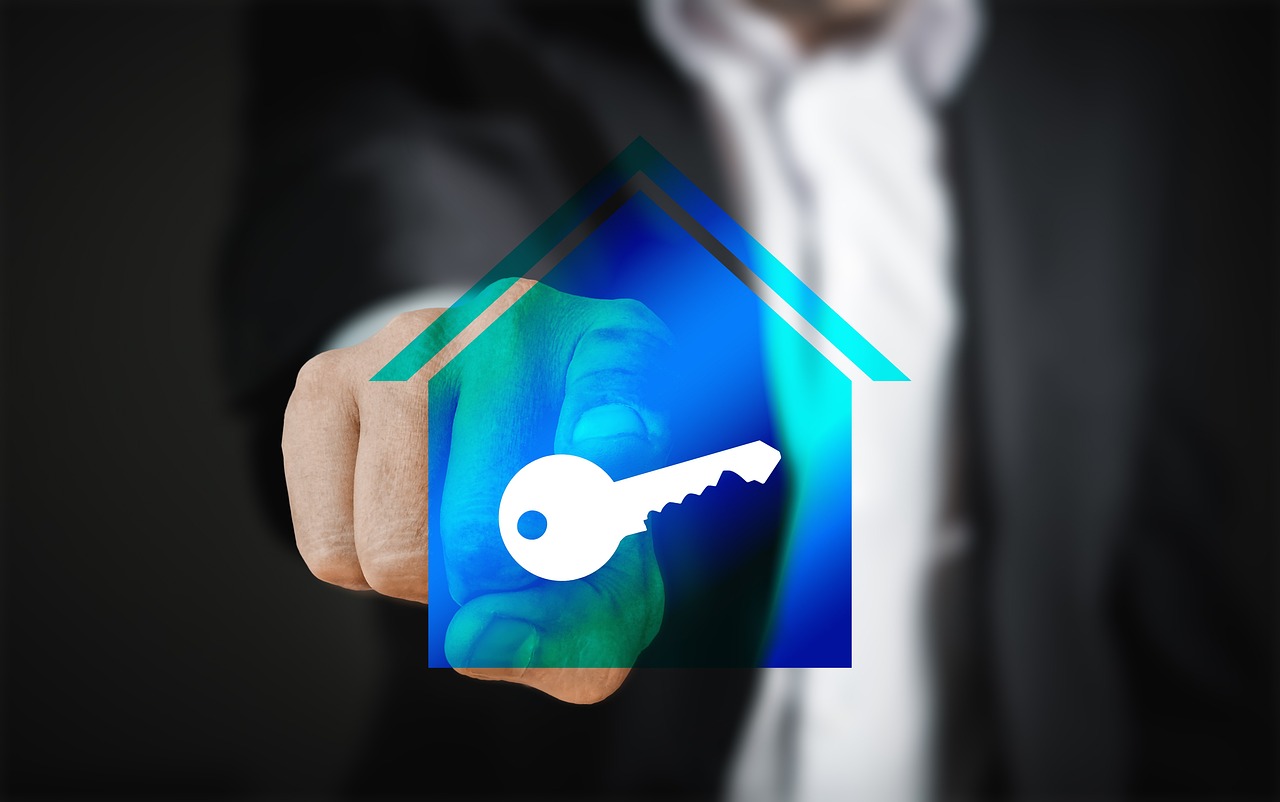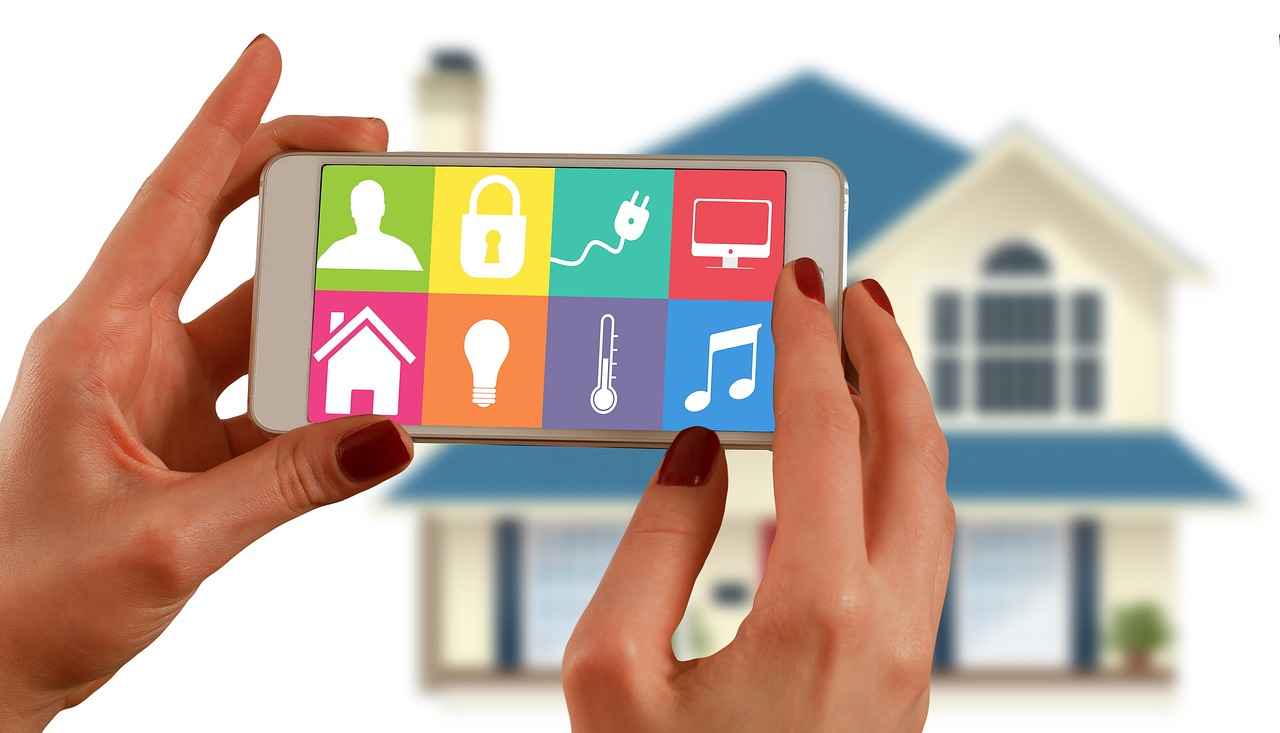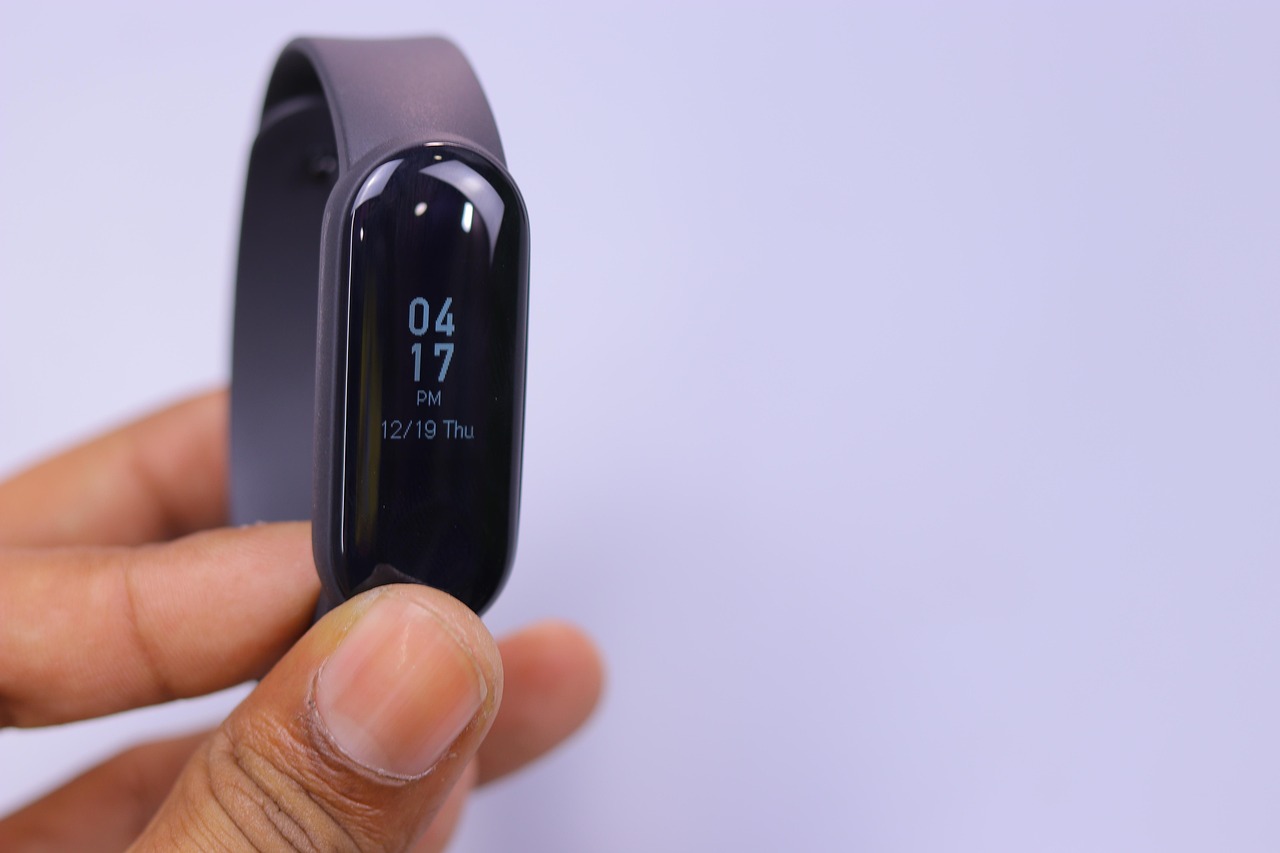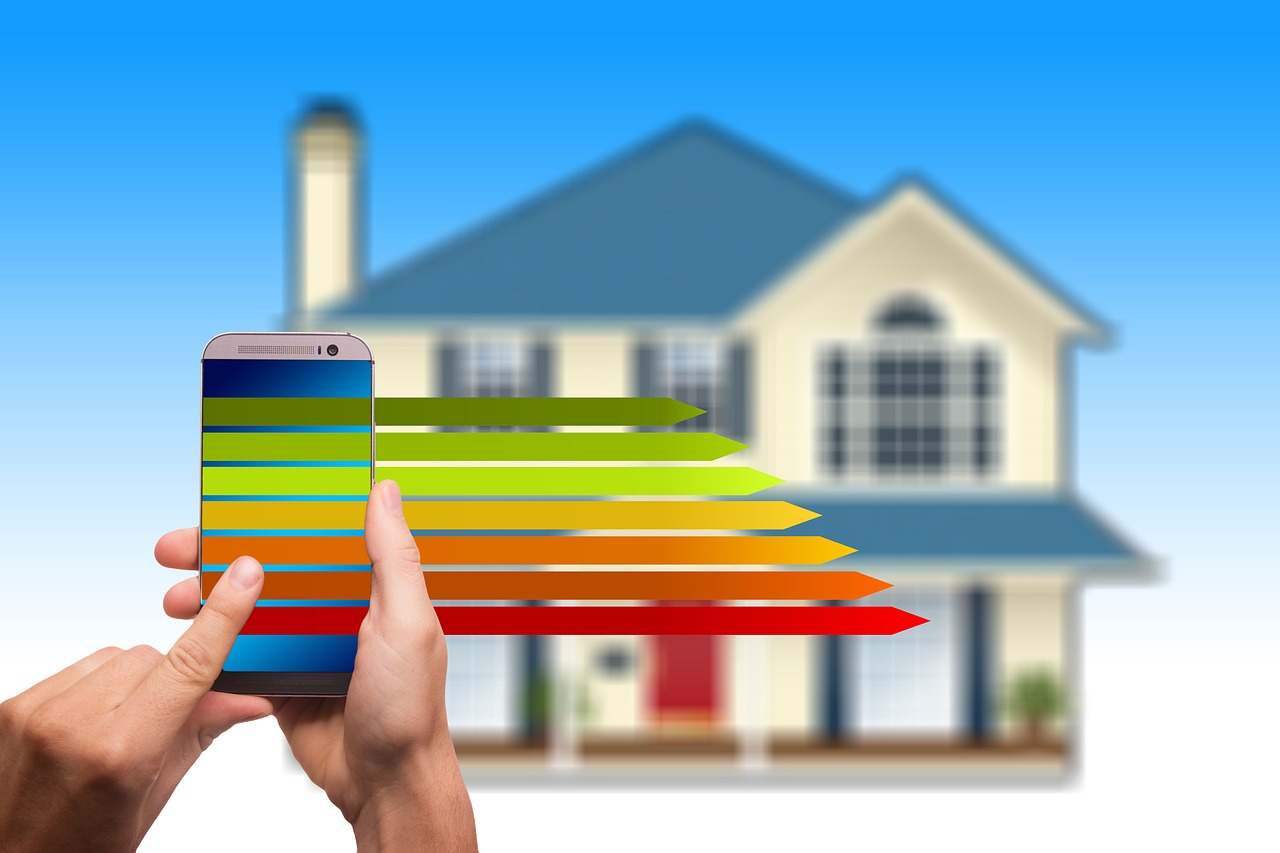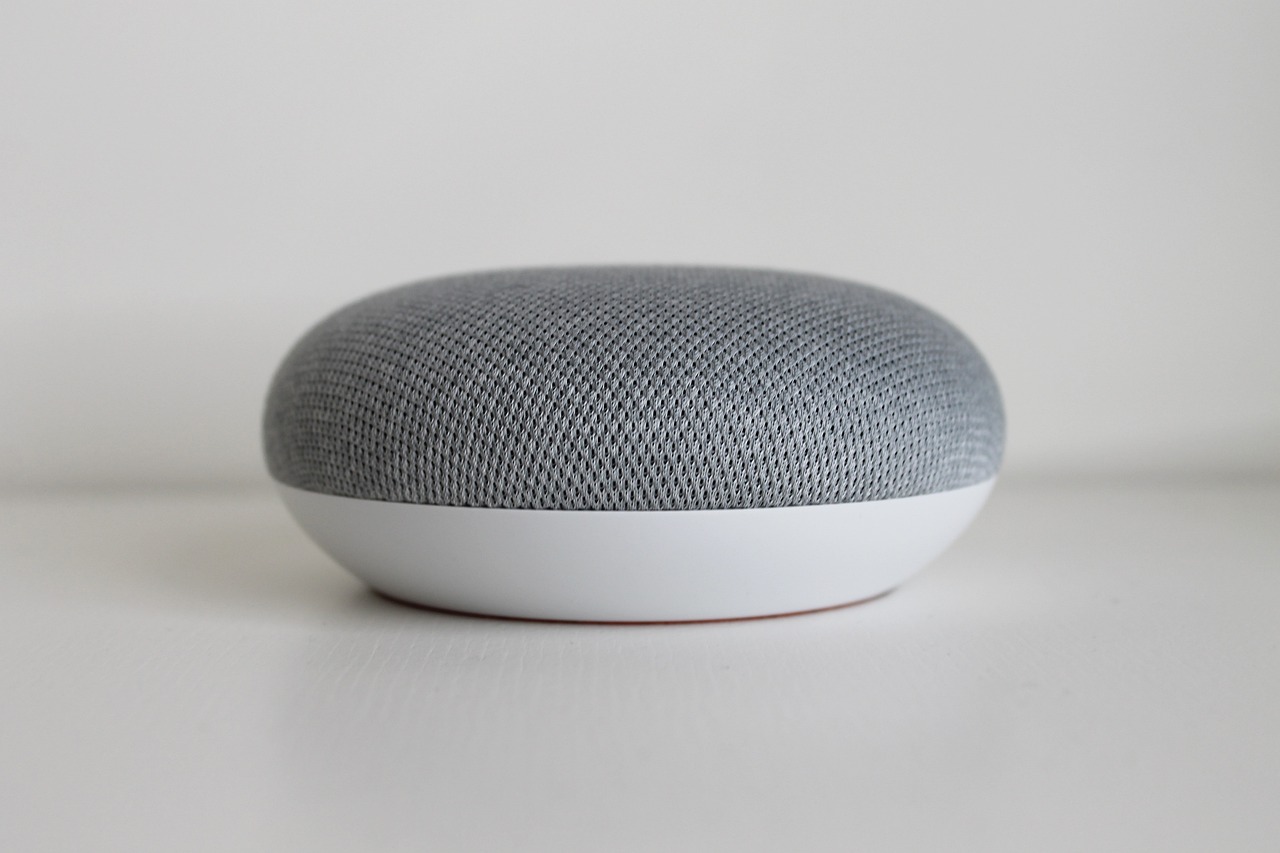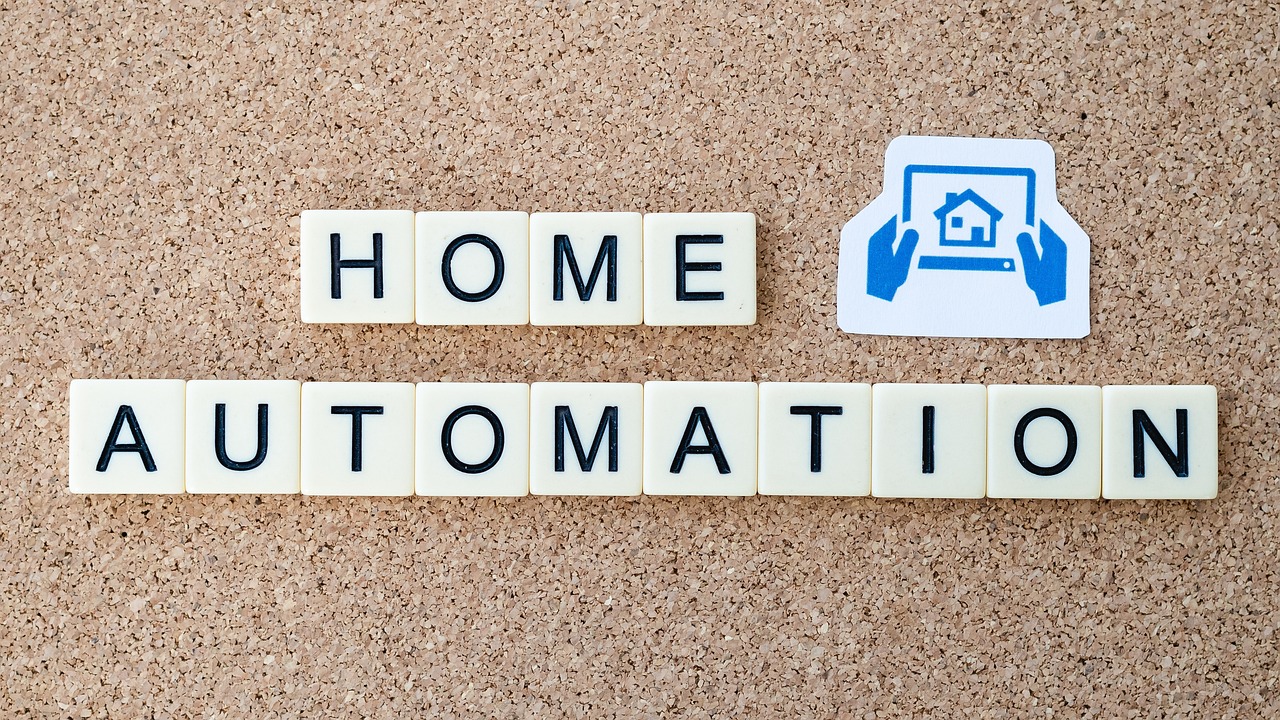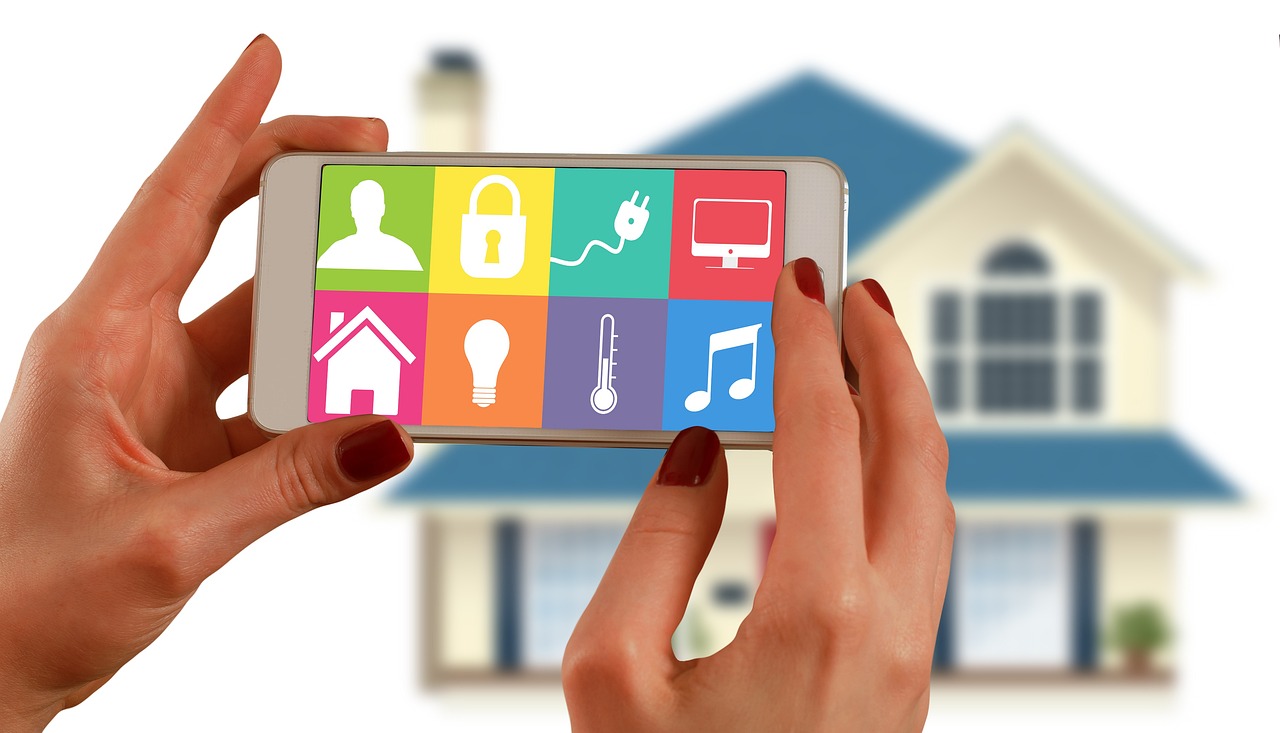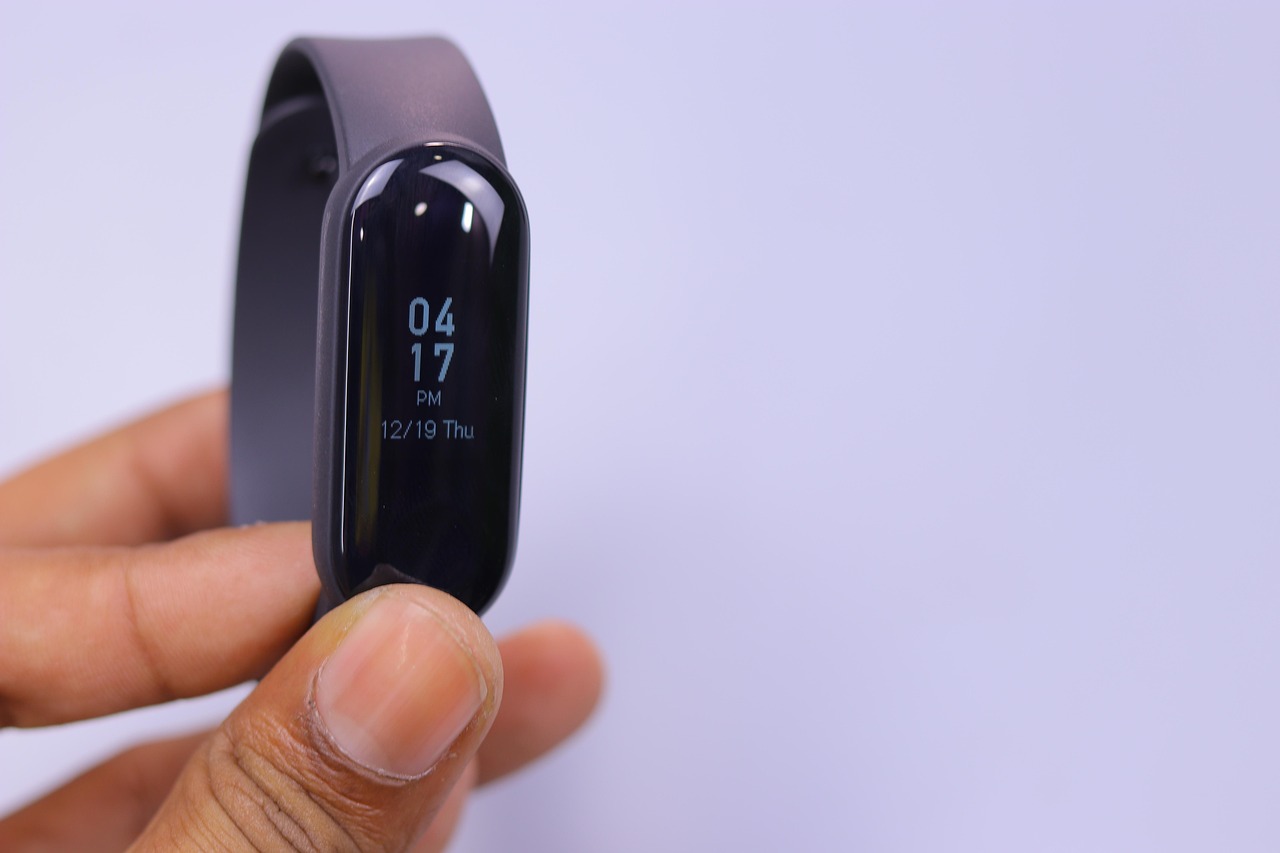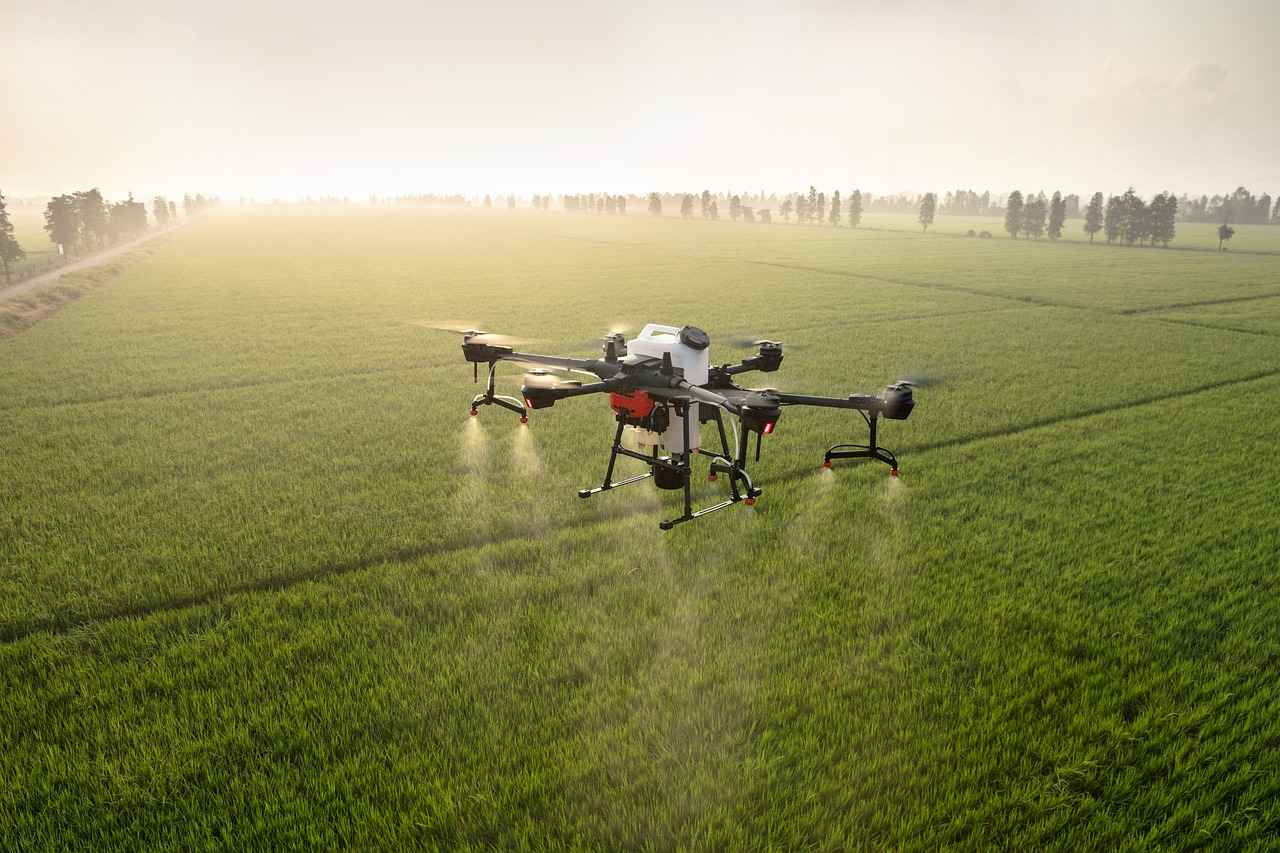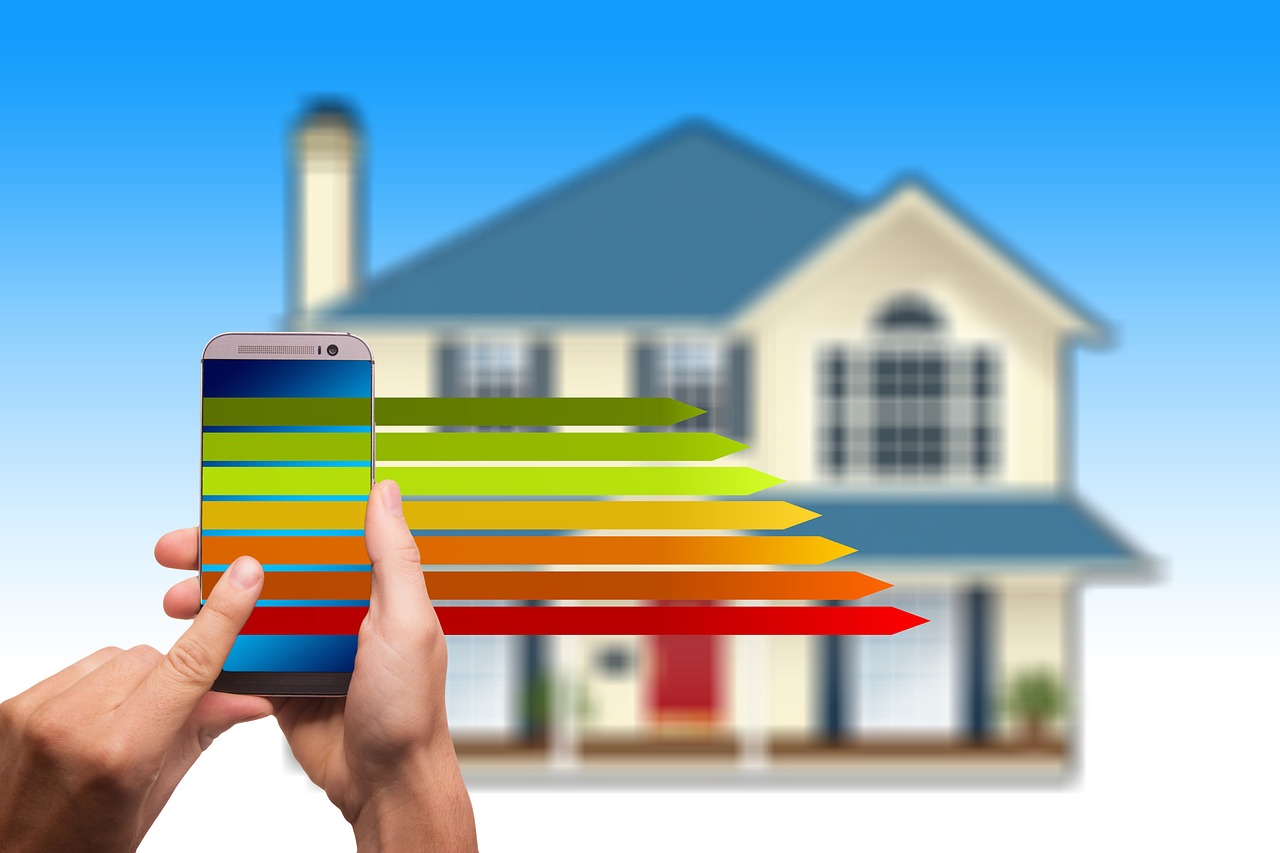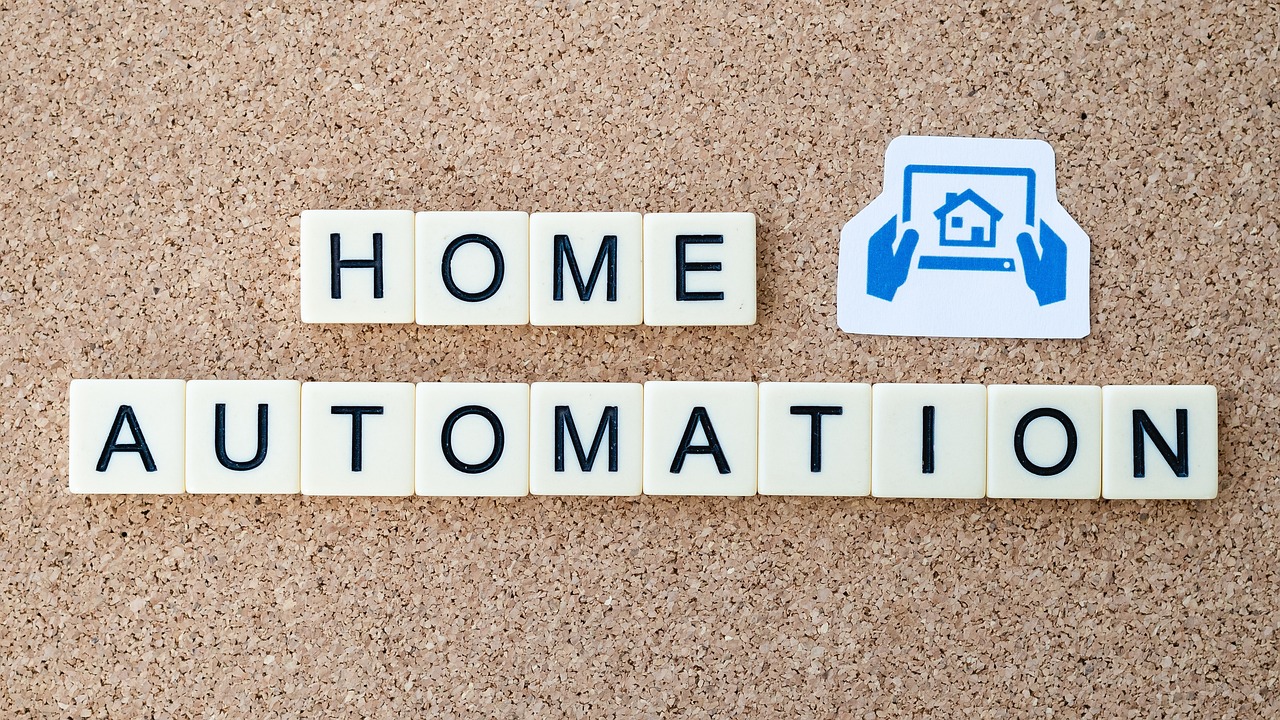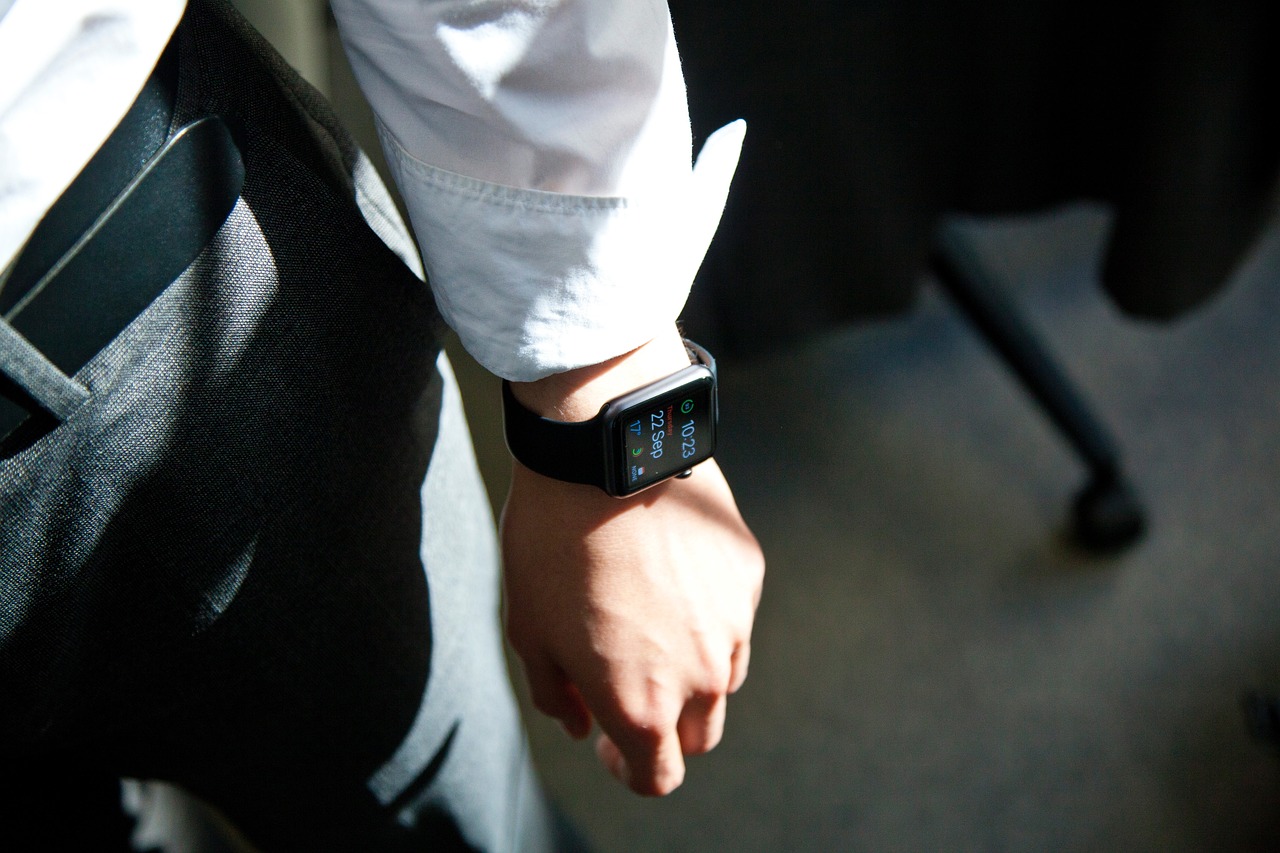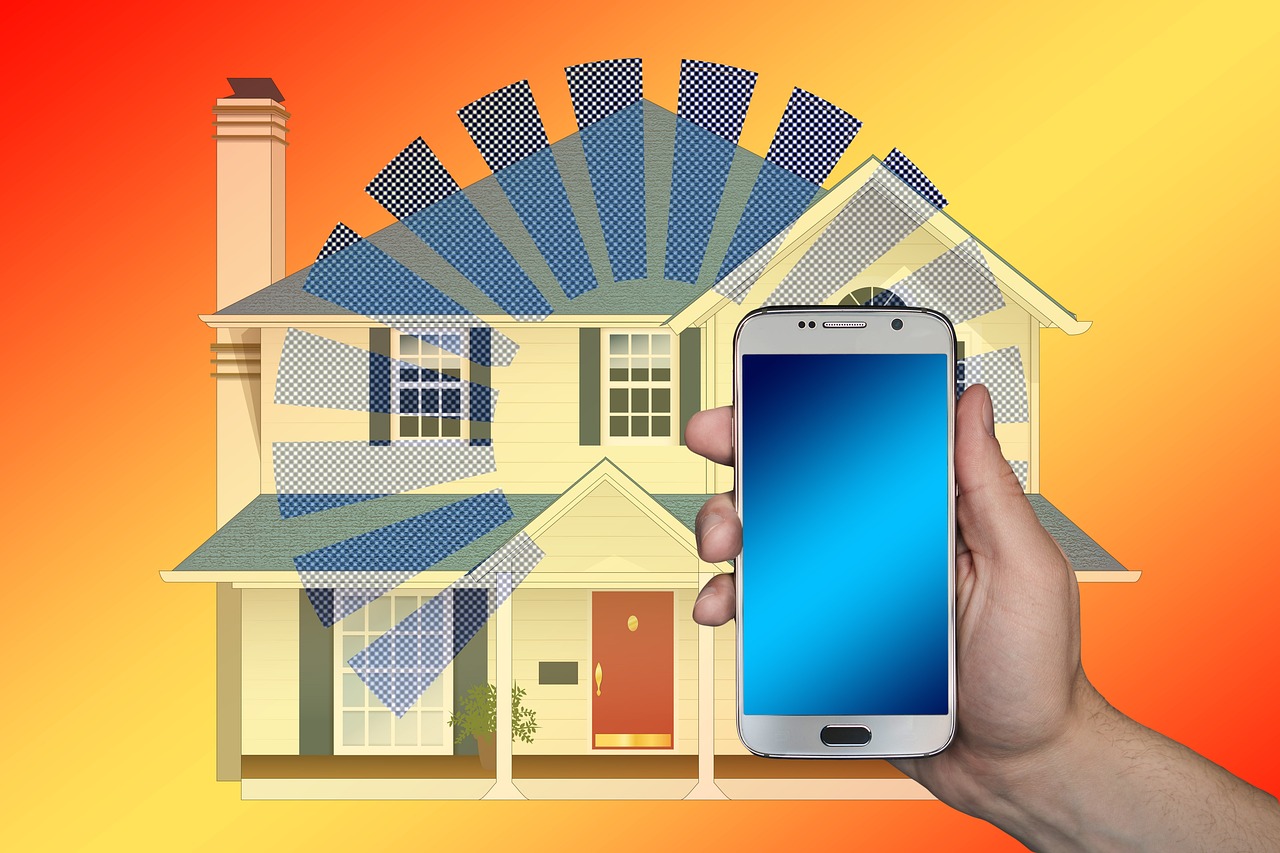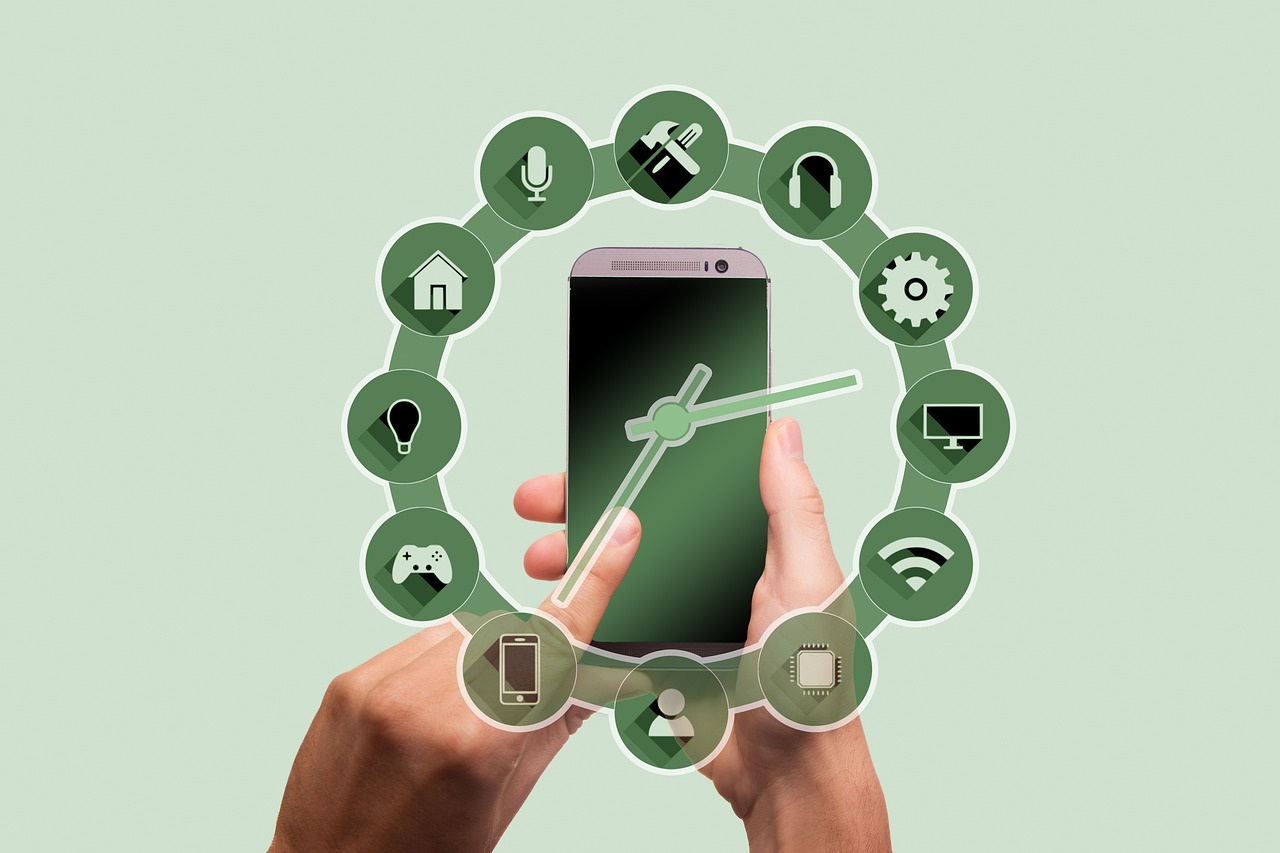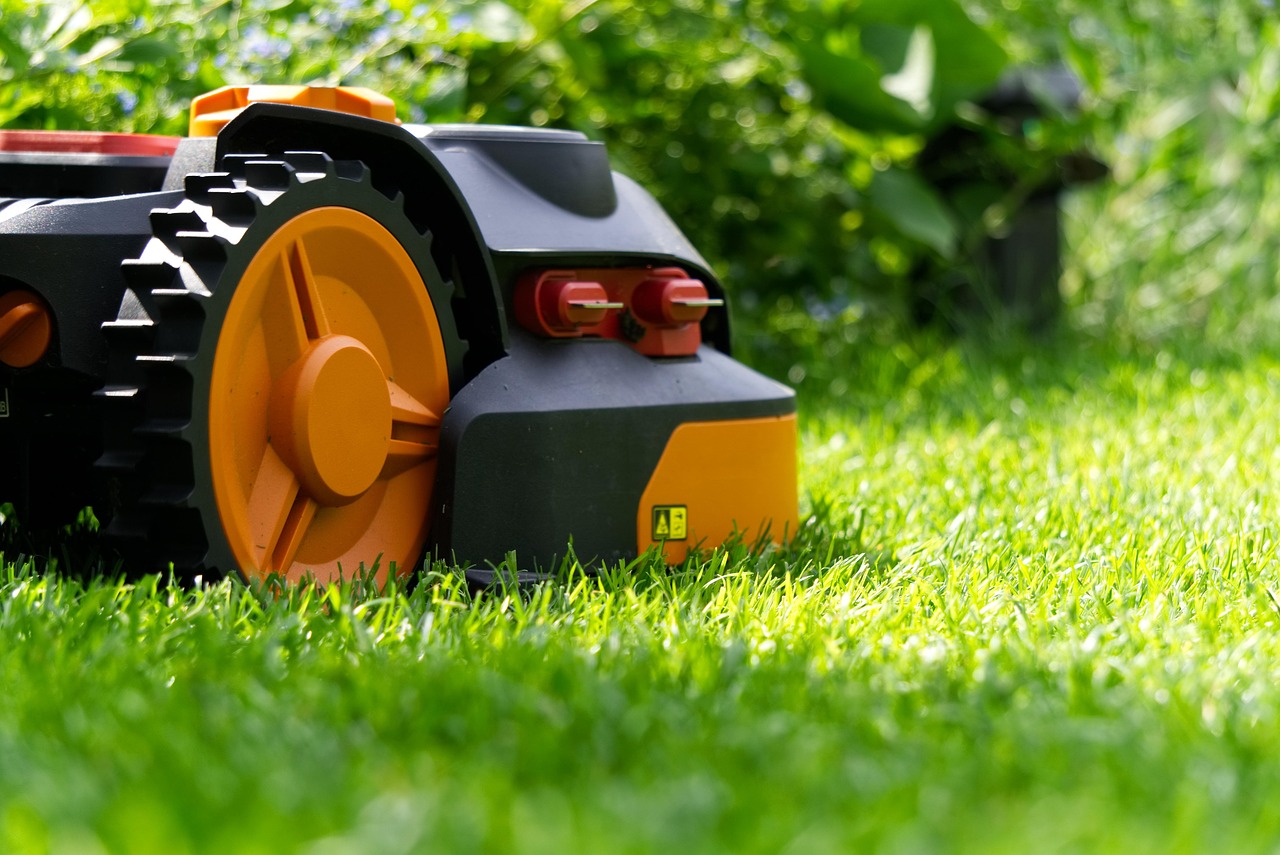In today’s world, the integration of smart home devices is not just about convenience; it also plays a crucial role in enhancing sustainability and efficiency within our living spaces. By utilizing advanced technology, homeowners can significantly reduce their environmental impact while enjoying a more efficient lifestyle. This article explores how these devices contribute to a greener future.
1. Understanding Smart Home Technology
Smart home technology encompasses a range of devices that connect to the internet, allowing for remote management and automation. This connectivity promotes energy efficiency and sustainable living practices, making it easier for homeowners to monitor and reduce their resource consumption.
2. The Significance of Sustainability
As we face the challenges of climate change, sustainability becomes essential. Smart home devices help in reducing carbon footprints and conserving resources. Choosing eco-friendly devices is crucial for fostering a sustainable lifestyle.
3. Energy Monitoring Solutions
- Smart Plugs: These devices allow homeowners to control their appliances remotely, schedule usage, and monitor energy consumption, effectively reducing waste.
- Energy Management Systems: These systems provide insights into energy consumption patterns, helping users identify inefficiencies and optimize their energy use.
4. Smart Thermostats
Smart thermostats learn user preferences and adjust heating and cooling accordingly, which not only enhances comfort but also significantly reduces utility bills.
5. Smart Lighting
- LED Smart Bulbs: Consuming less energy than traditional bulbs, they also have longer lifespans.
- Motion Sensors: These ensure lights are only on when needed, minimizing energy waste.
6. Efficient Smart Appliances
Smart appliances, such as refrigerators and washing machines, are designed to optimize energy and water use, enhancing overall household efficiency.
7. Water Management Innovations
- Smart Irrigation Systems: These systems adjust watering schedules based on weather conditions, promoting responsible water use.
- Leak Detection Sensors: These alert homeowners to leaks, preventing water waste and damage.
8. Security and Sustainability
Smart home security systems not only enhance safety but also contribute to sustainability by using energy-efficient monitoring.
9. Future Trends in Smart Home Technology
Emerging trends focus on increasing energy efficiency and promoting sustainable living practices, with innovations such as AI integration that further enhance user experiences.
10. Conclusion
Embracing smart home technology is a step towards a more sustainable future. By integrating these devices, homeowners can enjoy increased efficiency, reduced energy bills, and a smaller carbon footprint, making it a wise choice for environmentally conscious individuals.

1. Introduction to Smart Home Technology
Introduction to Smart Home Technology
Smart home technology is revolutionizing the way we interact with our living spaces. It encompasses a wide range of internet-connected devices that allow homeowners to manage their homes remotely and automate various functions. This technology not only enhances convenience but also plays a crucial role in promoting sustainability and energy efficiency in modern households.
By integrating smart devices, homeowners can monitor and control energy consumption, reduce waste, and create a more environmentally friendly living environment. For instance, smart thermostats can learn user preferences and adjust heating and cooling settings automatically, leading to significant energy savings. Similarly, smart lighting systems offer customizable options that allow users to turn off lights when not in use, further reducing electricity consumption.
Moreover, smart home technology contributes to a sustainable lifestyle by enabling homeowners to track their energy usage and identify areas for improvement. With the help of energy monitoring devices, individuals can gain insights into their consumption patterns and make informed decisions to optimize energy use. This not only helps in reducing utility bills but also contributes to a lower carbon footprint.
As we continue to embrace this technology, it is essential to consider the environmental impact of our choices. Selecting devices that prioritize energy efficiency and sustainability is key to creating a smart home that aligns with eco-friendly practices.
In conclusion, the integration of smart home technology is not just about convenience; it is a step towards a more sustainable future. By leveraging these innovations, homeowners can enhance their living spaces while making a positive impact on the environment.

2. Importance of Sustainability in Smart Homes
Importance of Sustainability in Smart Homes
Sustainability in smart homes is not just a trend; it is a necessity for our planet’s future. With the increasing awareness of climate change and environmental degradation, adopting sustainable practices in our living spaces has become imperative. Smart homes leverage technology to reduce carbon footprints and conserve valuable resources, making it essential to choose devices that promote eco-friendly practices and energy efficiency.
By integrating smart technology into our homes, we can significantly minimize energy consumption. For instance, smart thermostats adjust heating and cooling based on occupancy and preferences, ensuring that energy is used wisely. This not only leads to lower utility bills but also contributes to a healthier environment.
Why Choose Eco-Friendly Smart Devices?
- Energy Efficiency: Smart devices are designed to optimize energy use. For example, LED smart bulbs consume less power than traditional lighting solutions.
- Resource Conservation: Smart irrigation systems monitor weather conditions to ensure that water is used efficiently in gardens and lawns.
- Reduced Carbon Footprint: By minimizing energy waste, smart homes help reduce greenhouse gas emissions, contributing to a more sustainable future.
Moreover, the integration of renewable energy sources, such as solar panels, with smart home technology can further enhance sustainability. Homeowners can monitor energy production and consumption in real-time, allowing for better management of resources.
Conclusion
In conclusion, the importance of sustainability in smart homes cannot be overstated. By choosing devices that promote energy efficiency and eco-friendly practices, homeowners not only contribute to environmental conservation but also enjoy long-term savings and improved living conditions. Embracing smart home technology is a step towards a more sustainable and efficient future.

3. Energy Monitoring Devices
Energy monitoring devices play a crucial role in promoting a sustainable lifestyle by providing homeowners with the tools they need to track their energy consumption effectively. These devices are designed to identify inefficiencies in energy use, allowing individuals to make informed decisions that lead to reduced waste and lower utility bills.
By analyzing energy usage patterns, homeowners can pinpoint areas where energy is being wasted, such as appliances that consume excessive power or lighting that remains on unnecessarily. With this knowledge, they can implement changes that promote energy efficiency and contribute to a greener environment.
- Real-Time Monitoring: Many energy monitoring devices offer real-time data on energy consumption, enabling users to see how much energy is being used at any given moment.
- Historical Data Analysis: These devices often provide historical data, allowing homeowners to track their energy usage over time and identify trends.
- Alerts and Notifications: Users can receive alerts when their energy consumption exceeds certain thresholds, helping them to adjust their usage proactively.
One popular type of energy monitoring device is the smart plug. Smart plugs allow users to control their devices remotely and schedule when they are turned on or off, significantly reducing energy waste. Another option is the energy management system, which offers comprehensive insights into energy consumption across the entire home, enabling users to optimize their energy use effectively.
In conclusion, investing in energy monitoring devices is an essential step towards achieving a more sustainable home. By empowering homeowners with the ability to track and manage their energy consumption, these devices not only help save money but also contribute to a healthier planet.
3.1. Smart Plugs
Smart Plugs are revolutionary devices that enhance the functionality of everyday electronics. By connecting to your Wi-Fi network, these plugs allow you to control various appliances remotely, making your home more efficient and sustainable.
One of the key features of smart plugs is their ability to enable remote control of devices. This means you can turn appliances on or off from anywhere, using a smartphone app. This capability is especially useful for managing devices that are often left on unnecessarily, such as lamps or chargers.
Additionally, smart plugs come equipped with scheduling features. You can set timers for when devices should turn on or off, ensuring that energy is used only when needed. For instance, you can program your coffee maker to start brewing just before you wake up, eliminating the need for it to remain on throughout the night.
Another significant advantage is the energy monitoring capability. Many smart plugs track energy consumption, providing insights into which devices use the most power. This information can help you identify energy-hungry appliances and make informed decisions to reduce your overall energy usage.
Incorporating smart plugs into your home not only enhances convenience but also contributes to a more sustainable lifestyle. By reducing energy waste and allowing for better management of your devices, smart plugs are a practical choice for any environmentally conscious homeowner.
- Remote Control: Turn devices on/off from anywhere.
- Scheduling: Automate device usage with timers.
- Energy Monitoring: Track and optimize energy consumption.
In conclusion, smart plugs are an essential component of a modern smart home, offering numerous benefits that promote energy efficiency and sustainability. By adopting this technology, you can take significant steps towards reducing your carbon footprint while enjoying the convenience of remote management.
3.2. Energy Management Systems
Energy Management Systems (EMS) have emerged as vital tools in the quest for enhanced energy efficiency and sustainability within homes. By leveraging advanced technology, these systems provide homeowners with a comprehensive overview of their energy consumption patterns, enabling them to make informed decisions that significantly reduce waste.
One of the key features of EMS is their ability to monitor energy usage in real-time. Homeowners can access detailed reports and analytics that highlight which appliances consume the most energy and at what times. This granular insight allows users to identify inefficiencies and adjust their habits accordingly. For instance, if a particular device is found to be consuming excessive energy during peak hours, users can schedule its operation during off-peak times to take advantage of lower energy rates.
Moreover, many EMS integrate with other smart home devices, creating a cohesive ecosystem that enhances energy management. For example, when paired with smart thermostats, the system can automatically adjust heating and cooling settings based on occupancy and energy usage patterns. This not only optimizes comfort but also ensures that energy is not wasted when the home is unoccupied.
Another significant benefit of EMS is their role in promoting sustainability. By providing insights into energy consumption, these systems empower homeowners to adopt more eco-friendly practices. For instance, users can set goals for reducing their carbon footprint and track their progress over time. This accountability fosters a culture of sustainability within the household, encouraging all family members to participate in energy-saving initiatives.
In conclusion, Energy Management Systems are indispensable for anyone looking to enhance their home’s energy efficiency and sustainability. By providing comprehensive insights into energy consumption, they enable homeowners to make informed decisions, reduce waste, and contribute to a more sustainable future.

4. Smart Thermostats
Smart thermostats are revolutionizing the way we manage our home heating and cooling systems. These advanced devices not only learn user preferences but also adapt to changing conditions, providing an unparalleled level of comfort while optimizing energy consumption.
Understanding Smart Thermostat Functionality
At their core, smart thermostats utilize machine learning algorithms to analyze user behavior and environmental factors. This means they can automatically adjust settings based on your daily routines, ensuring that your home is always at the perfect temperature without unnecessary energy expenditure.
Energy Efficiency and Cost Savings
One of the most significant benefits of smart thermostats is their ability to reduce utility bills. By optimizing heating and cooling schedules, these devices can lead to substantial savings. According to studies, homeowners can save up to 30% on their energy bills by using a smart thermostat effectively.
Programmable and Adaptive Settings
- Programmable Features: Users can set specific schedules for different times of the day, ensuring heating and cooling only occurs when needed.
- Adaptive Learning: Over time, the thermostat learns when to adjust temperatures based on user habits and preferences, further enhancing energy efficiency.
Remote Access and Control
With remote access capabilities, homeowners can control their smart thermostats from anywhere using a smartphone app. This feature allows for adjustments on-the-go, ensuring optimal energy use even when you’re away from home.
Conclusion
In summary, smart thermostats represent a significant advancement in home technology, combining comfort, convenience, and energy efficiency. By learning user preferences and adapting accordingly, they not only enhance the living experience but also contribute to a more sustainable future.
4.1. Benefits of Programmable Settings
Benefits of Programmable Settings
Programmable settings on smart thermostats are a game changer for homeowners looking to enhance energy efficiency and reduce utility costs. By allowing users to set specific schedules for heating and cooling, these devices ensure that energy is not wasted when the home is unoccupied. Here are some key benefits:
- Energy Savings: One of the most significant advantages of programmable settings is the potential for substantial energy savings. By automatically adjusting the temperature based on your daily routines, you can avoid unnecessary heating or cooling when no one is home.
- Enhanced Comfort: Smart thermostats learn your preferences and can pre-heat or pre-cool your home before you arrive, ensuring a comfortable environment as soon as you step through the door.
- Remote Control: Many smart thermostats come with mobile apps that allow you to monitor and adjust settings from anywhere. If your plans change, you can easily modify the schedule to suit your needs.
- Environmental Impact: By optimizing energy use, programmable settings contribute to a reduction in carbon footprints. This aspect is increasingly important as homeowners seek to adopt more sustainable living practices.
- Cost-Effectiveness: While the initial investment in a smart thermostat may seem high, the long-term savings on energy bills can make it a cost-effective solution for many households.
In conclusion, the benefits of programmable settings on smart thermostats extend beyond mere convenience. They play a crucial role in promoting energy efficiency, enhancing comfort, and contributing to a more sustainable home environment. By integrating these advanced features into your home, you can enjoy a comfortable living space while also being mindful of your energy consumption.
4.2. Remote Access Features
In today’s fast-paced world, remote access has become a vital feature of smart home technology, particularly for heating and cooling systems. This capability allows homeowners to manage their home’s climate control from virtually anywhere, ensuring that energy is used efficiently and effectively.
Imagine being able to adjust your thermostat while at work or even on vacation. With remote access, users can monitor and modify their heating and cooling settings through a smartphone app or web interface. This not only enhances comfort but also contributes significantly to energy savings.
Here are some key benefits of remote access features:
- Energy Efficiency: Homeowners can turn off heating or cooling systems when they are not at home, preventing unnecessary energy consumption.
- Cost Savings: By optimizing energy use, families can see a noticeable decrease in their utility bills.
- Convenience: Adjusting the temperature before arriving home ensures a comfortable environment without wasting energy.
- Alerts and Notifications: Many smart thermostats send alerts about extreme temperature changes, allowing homeowners to respond quickly to potential issues.
Additionally, remote access features often integrate with other smart home devices, allowing for a seamless home automation experience. For instance, users can set their systems to adjust based on their daily routines, further enhancing energy efficiency.
In conclusion, the remote access feature of smart thermostats not only provides convenience and comfort but also plays a crucial role in promoting sustainable living by encouraging responsible energy use. Homeowners looking to enhance their smart home experience should consider investing in devices that offer robust remote access capabilities.

5. Smart Lighting Solutions
In today’s world, smart lighting solutions have become an integral part of home automation, providing homeowners with the ability to customize and control their lighting easily. These systems not only enhance the ambiance of your home but also contribute significantly to energy savings and sustainability.
One of the primary benefits of smart lighting systems is their customizability. Homeowners can adjust brightness, color, and even schedule lighting based on their daily routines. This level of control allows for a tailored lighting experience that can transform any space, creating the perfect atmosphere for relaxation, work, or entertainment.
Moreover, smart lighting systems are often equipped with automated features that help reduce energy consumption. For instance, many systems can be programmed to turn off lights when rooms are unoccupied or to dim automatically during daylight hours. This not only conserves energy but also extends the lifespan of the bulbs, particularly when using LED smart bulbs, which are known for their energy efficiency and longevity.
Additionally, the integration of motion sensors and timers within smart lighting systems ensures that lights are only activated when necessary. This feature significantly minimizes energy waste, making it an eco-friendly choice for homeowners who are conscious about their environmental impact.
In summary, smart lighting solutions offer a multitude of benefits, including:
- Enhanced Control: Easily adjust lighting settings from anywhere using a smartphone app.
- Energy Efficiency: Reduce energy consumption with automated features.
- Improved Ambiance: Customize lighting to suit various moods and occasions.
- Longevity: Use energy-efficient LED bulbs that last longer than traditional options.
As more homeowners embrace sustainability, smart lighting solutions stand out as a practical and effective way to enhance energy efficiency while creating a comfortable and inviting living environment.
5.1. LED Smart Bulbs
In today’s world, where energy efficiency is a growing concern, LED smart bulbs have emerged as a leading choice for sustainable lighting solutions. These innovative bulbs not only consume significantly less energy compared to traditional incandescent bulbs, but they also boast a range of features that enhance their appeal.
One of the most remarkable benefits of LED smart bulbs is their longevity. While traditional bulbs typically last for about 1,000 hours, LED bulbs can last up to 25,000 hours or more. This means fewer replacements, reducing waste and the environmental impact associated with manufacturing and disposing of light bulbs.
Additionally, LED smart bulbs can be controlled remotely via smartphone apps or smart home systems. This remote control capability allows users to turn lights on or off, adjust brightness, and even change colors from anywhere, offering both convenience and flexibility. By scheduling lights to turn off when not in use, homeowners can further optimize their energy savings.
Moreover, LED smart bulbs are designed to be compatible with various smart home ecosystems, enabling integration with other devices such as motion sensors and smart thermostats. This compatibility enhances overall home automation, leading to a more efficient energy management system.
- Energy Efficiency: LED smart bulbs use up to 80% less energy than traditional bulbs.
- Long Lifespan: With a lifespan of up to 25,000 hours, they require fewer replacements.
- Remote Control: Manage your lighting from anywhere through smartphone apps.
- Color Customization: Many models offer adjustable colors to suit any mood or occasion.
In conclusion, LED smart bulbs represent a significant advancement in lighting technology, combining energy efficiency, longevity, and smart features. By choosing these bulbs, homeowners can contribute to a more sustainable future while enjoying the convenience and versatility they offer.
5.2. Motion Sensors and Timers
Integrating motion sensors and timers into lighting systems is a transformative approach to energy management in modern homes. By ensuring that lights are only activated when necessary, these technologies play a crucial role in significantly reducing energy waste.
Motion sensors detect movement within a designated area, automatically turning lights on when someone enters and off when the space is unoccupied. This not only enhances convenience but also ensures that energy is not wasted illuminating empty rooms. For instance, in hallways or bathrooms, where lights are often left on unnecessarily, motion sensors can provide a practical solution by eliminating this common oversight.
Timers, on the other hand, allow homeowners to set specific schedules for their lighting systems. This feature is particularly useful for outdoor lighting, where lights can be programmed to turn on at dusk and off at dawn, providing security while conserving energy during daylight hours. By combining timers with motion sensors, homeowners can create a highly efficient lighting system that adapts to their lifestyle.
Moreover, the integration of these technologies can lead to substantial cost savings on energy bills. According to studies, homes equipped with motion sensors can reduce energy consumption by up to 30%. This not only benefits the environment by lowering carbon footprints but also contributes to financial savings over time.
In conclusion, the implementation of motion sensors and timers in lighting systems is a smart choice for homeowners looking to enhance their energy efficiency. By ensuring that lights are only on when needed, these devices help to create a more sustainable and cost-effective living environment.

6. Smart Appliances for Efficiency
Smart Appliances for Efficiency
In today’s fast-paced world, smart appliances have emerged as essential tools for enhancing household efficiency and promoting sustainability. These devices, including refrigerators, washing machines, and dryers, are engineered with advanced technology to optimize energy use and minimize water consumption.
Smart appliances not only contribute to a more sustainable lifestyle but also offer convenience and flexibility for homeowners. By connecting to the internet, these devices allow users to monitor and control their operation remotely, ensuring optimal performance and energy savings.
| Type of Appliance | Energy Efficiency Features | Benefits |
|---|---|---|
| Refrigerators | Adaptive cooling technology, energy-saving modes | Reduces electricity bills, maintains food freshness |
| Washing Machines | Load sensing, eco-friendly wash cycles | Conserves water, saves energy |
| Dryers | Moisture sensors, energy-efficient drying settings | Prevents over-drying, reduces energy consumption |
One of the key advantages of smart appliances is their ability to provide real-time data on energy and water usage. This information empowers homeowners to make informed decisions, such as adjusting usage patterns to further enhance efficiency. For instance, a smart washing machine can notify users of the best times to run cycles based on energy rates, thus saving money.
Additionally, many smart appliances integrate seamlessly with home automation systems, allowing for synchronized operation with other smart devices. This integration can lead to a more cohesive and efficient home ecosystem.
In conclusion, investing in smart appliances is not just about upgrading to the latest technology; it’s a commitment to a more sustainable and efficient way of living. By choosing energy-efficient models and leveraging their advanced features, homeowners can significantly reduce their environmental impact while enjoying the convenience and functionality these devices offer.
6.1. Energy-Efficient Models
Energy-efficient smart appliances are becoming increasingly popular among homeowners who are looking to reduce their utility bills while also being mindful of their environmental impact. These appliances utilize advanced technology to optimize energy consumption, making them a smart choice for those who wish to lead a more sustainable lifestyle.
By investing in energy-efficient models, homeowners can significantly lower their energy usage without sacrificing performance or convenience. These appliances are designed to use less electricity, which not only helps in saving money but also contributes to a reduction in greenhouse gas emissions. For instance, ENERGY STAR-rated appliances are rigorously tested to ensure they meet strict energy efficiency guidelines set by the U.S. Environmental Protection Agency.
| Appliance Type | Energy Savings | Environmental Impact |
|---|---|---|
| Smart Refrigerators | Up to 15% less energy | Reduced carbon footprint |
| Smart Washers and Dryers | Up to 30% less water and energy | Conserves water resources |
| Smart Dishwashers | Up to 25% less energy | Less water pollution |
Moreover, many of these appliances come equipped with smart technology that allows users to monitor and control their energy consumption remotely. This feature enables homeowners to make informed decisions about their energy use, ensuring they are only using power when necessary. For example, smart washers can be programmed to run during off-peak hours when energy costs are lower.
In conclusion, choosing energy-efficient smart appliances is a proactive step towards reducing both utility bills and environmental impact. By selecting models that prioritize energy efficiency, homeowners can enjoy modern conveniences while contributing to a more sustainable future.
6.2. Remote Monitoring and Control
In today’s fast-paced world, the ability to remotely monitor and control your home appliances is more than just a convenience; it is a crucial component of an efficient and sustainable lifestyle. Many smart appliances are equipped with advanced technologies that allow homeowners to manage their energy consumption effectively, no matter where they are. This feature not only enhances convenience but also plays a significant role in promoting energy efficiency and sustainability.
With remote monitoring, users can track their appliances’ energy usage in real-time. For instance, a smart refrigerator can send notifications if the door is left open, helping to prevent energy waste. Similarly, smart washing machines allow users to start or stop cycles remotely, ensuring that they only operate during off-peak energy hours, which can lead to substantial savings on utility bills.
Moreover, remote control capabilities enable homeowners to adjust settings on appliances based on their needs. For example, if you’re away from home and remember that you left the air conditioning running, you can easily turn it off via a smartphone app. This not only conserves energy but also reduces your carbon footprint.
Many smart appliances also come with sophisticated energy management systems that provide insights into usage patterns. This data can help users make informed decisions about their energy consumption habits. By understanding when and how much energy is being used, homeowners can optimize their appliance usage, ensuring that they are not wasting resources.
In conclusion, the remote monitoring and control features of smart appliances empower users to take charge of their energy consumption effectively. By leveraging these technologies, homeowners can not only enhance their convenience but also contribute to a more sustainable future.

7. Water Management Systems
Water management systems have become essential in modern homes, particularly as the need for sustainable living practices grows. These advanced systems not only help in monitoring water usage but also play a crucial role in conserving this vital resource. By implementing smart water management solutions, homeowners can significantly reduce waste and promote responsible water consumption.
One of the most significant advantages of smart water management systems is their ability to monitor real-time water usage. This feature allows homeowners to gain insights into their daily consumption patterns, making it easier to identify areas where water is being wasted. With this information at hand, users can make informed decisions to adjust their habits, leading to substantial savings on water bills.
Moreover, these systems often include automated controls that can help regulate water flow in different areas of the home. For example, smart irrigation systems can adjust watering schedules based on weather forecasts, ensuring that gardens and lawns receive the right amount of water without overwatering. This not only conserves water but also promotes healthier plant growth.
Another critical feature of smart water management systems is the integration of leak detection sensors. These sensors can alert homeowners to leaks in real time, preventing significant water loss and potential damage to the property. By addressing leaks promptly, homeowners can avoid costly repairs and contribute to water conservation efforts.
In conclusion, adopting smart water management systems is a proactive step towards promoting sustainability in the home. By effectively monitoring and controlling water usage, these systems not only help prevent waste but also foster a culture of conservation. As homeowners become more aware of their water consumption, they can contribute to a more sustainable future.
7.1. Smart Irrigation Systems
In today’s world, where water conservation is paramount, smart irrigation systems have emerged as a revolutionary solution for maintaining healthy gardens and lawns. These advanced systems utilize weather data and soil moisture levels to optimize watering schedules, ensuring that plants receive the right amount of water at the right time.
By integrating real-time weather forecasts, smart irrigation systems can adjust watering times and durations based on current conditions. For instance, if rain is forecasted, the system can automatically skip scheduled watering, preventing water waste and promoting efficient resource use. This not only conserves water but also enhances the overall health of your garden by preventing overwatering.
Additionally, many smart irrigation systems come equipped with soil moisture sensors that monitor the moisture levels in the ground. This feature allows the system to determine when to water, ensuring that plants are never under or over-watered. The result is a more sustainable approach to gardening that aligns with eco-friendly practices.
Furthermore, these systems can be controlled remotely via smartphone apps, providing users with the flexibility to adjust settings from anywhere. This means that whether you’re at home or traveling, you can manage your garden’s watering needs effortlessly.
In summary, smart irrigation systems represent a significant advancement in sustainable gardening practices. By utilizing technology to optimize watering schedules based on weather conditions, these systems not only promote efficient water use but also contribute to healthier plants and a greener planet.
| Features | Benefits |
|---|---|
| Weather Forecast Integration | Reduces water waste by skipping watering during rain |
| Soil Moisture Sensors | Ensures optimal watering for plant health |
| Remote Access | Allows for convenient management from anywhere |
- Conserves water
- Enhances plant health
- Promotes eco-friendly gardening practices
Smart irrigation systems are an investment in both your garden's health and the environment.
7.2. Leak Detection Sensors
Leak Detection Sensors play a crucial role in modern smart home technology, offering homeowners a reliable solution to monitor water usage and prevent potential damage caused by leaks. These sensors are designed to detect even the smallest water leaks, providing early alerts that can save homeowners from costly repairs and extensive water damage.
By integrating leak detection sensors into a smart home system, homeowners can enjoy a range of benefits:
- Early Detection: Leak detection sensors can identify leaks promptly, allowing for immediate action to be taken. This early detection helps in minimizing water waste and prevents significant damage to the property.
- Automated Alerts: Most leak detection systems send real-time notifications to homeowners via smartphone apps or other devices. This means that even when away from home, users can stay informed and take necessary actions.
- Water Conservation: By preventing leaks, these sensors contribute to responsible water use, helping to conserve this precious resource and reduce overall water bills.
- Integration with Smart Home Systems: Leak detection sensors can be easily integrated with other smart home devices, such as alarms and water shut-off systems, enhancing overall home automation and security.
Furthermore, the installation of leak detection sensors can significantly enhance the sustainability of a home. By reducing water waste and promoting efficient usage, these devices align with eco-friendly practices that are increasingly important in today’s world.
In conclusion, leak detection sensors are an essential component of a smart home, offering peace of mind and promoting responsible water management. By adopting this technology, homeowners can protect their property, save money, and contribute to a more sustainable future.

8. Home Security and Sustainability
In today’s rapidly evolving world, home security systems play a crucial role in safeguarding our homes while also promoting sustainability. These systems not only enhance safety but also contribute to energy efficiency through innovative technologies.
Modern smart home security systems integrate various features that enable homeowners to monitor their properties remotely. This capability is vital for ensuring safety, as it allows users to keep an eye on their homes from anywhere, using their smartphones or other devices. By utilizing energy-efficient technologies, these systems minimize electricity consumption, which is essential for reducing the overall carbon footprint of a household.
- Energy-Efficient Monitoring: Many smart security devices, such as cameras and sensors, are designed to use minimal energy while still providing comprehensive coverage. This means that homeowners can maintain security without incurring high energy costs.
- Remote Access Capabilities: The ability to access security systems remotely not only enhances convenience but also allows homeowners to manage their energy consumption effectively. For instance, users can turn off lights or adjust thermostats when they are away, further contributing to sustainability.
- Integration with Other Smart Devices: Smart security systems can be integrated with other home automation devices, such as smart lighting and thermostats. This interconnectedness allows for optimized energy use, as systems can work together to ensure that energy is only utilized when necessary.
Furthermore, the implementation of smart cameras and motion sensors ensures that security measures are in place without excessive resource consumption. These devices often come equipped with features like night vision and cloud storage, which enhance security while minimizing energy waste.
In conclusion, embracing smart home security systems is a step towards a safer and more sustainable living environment. By prioritizing energy efficiency and remote access capabilities, homeowners can not only protect their properties but also contribute to a healthier planet.
8.1. Smart Cameras and Motion Sensors
In today’s world, ensuring the safety of our homes has become a top priority for many homeowners. Smart cameras and motion sensors are essential components of modern security systems, providing enhanced surveillance capabilities while promoting energy efficiency. These devices not only help in monitoring your property but also do so with minimal energy consumption, making them a sustainable choice for home security.
Smart cameras are equipped with advanced features such as high-definition video, night vision, and real-time alerts, allowing homeowners to keep an eye on their property from anywhere in the world. When combined with motion sensors, these cameras activate only when movement is detected, significantly reducing unnecessary energy usage. This combination ensures that you can enjoy peace of mind without worrying about excessive resource consumption.
- Energy Efficiency: Smart cameras and motion sensors are designed to operate on low power, ensuring that they do not contribute significantly to your electricity bill.
- Remote Monitoring: Many smart cameras come with mobile app integration, allowing you to view live feeds and receive alerts directly on your smartphone.
- Enhanced Security: The ability to detect motion and capture footage in real-time adds an extra layer of protection against potential intruders.
Moreover, integrating these devices with other smart home technologies can lead to even greater energy savings. For instance, connecting motion sensors to smart lighting systems allows lights to turn on only when someone is present, further enhancing energy efficiency.
In conclusion, investing in smart cameras and motion sensors not only enhances your home security but also aligns with sustainable living practices. By utilizing these energy-efficient devices, homeowners can protect their property and contribute to a greener environment.
8.2. Integration with Other Smart Devices
Integration of Security Systems with Other Smart Devices
Integrating security systems with other smart home devices is a crucial step towards enhancing energy efficiency and streamlining home management. By creating a network of interconnected devices, homeowners can achieve a seamless experience that not only improves security but also promotes sustainability.
Enhancing Energy Efficiency
When security systems are integrated with smart lighting, thermostats, and energy management systems, they can work in harmony to optimize energy usage. For instance, smart cameras can trigger lights to turn on when they detect motion, ensuring that energy is not wasted on unnecessary lighting. Additionally, smart thermostats can adjust temperatures based on occupancy detected by security systems, further reducing energy consumption.
Streamlining Home Management
Integration allows for centralized control of various devices through a single interface, such as a smart home hub or mobile app. This simplifies the management of home security and other smart devices, enabling homeowners to monitor their entire home environment from one location. Users can easily set schedules, receive alerts, and manage energy consumption, all while ensuring their home is secure.
Real-World Applications
- Automated Lighting: Lights can be programmed to turn on when the security system is armed, providing visibility and safety.
- Climate Control: Security systems can communicate with smart thermostats to adjust heating or cooling based on whether anyone is home.
- Water Management: Leak detection sensors linked to security systems can alert homeowners to potential water damage, allowing for immediate action.
Conclusion
Integrating security systems with other smart home devices not only enhances safety but also contributes to a more sustainable and efficient home. By leveraging the capabilities of interconnected devices, homeowners can enjoy greater control, improved energy efficiency, and streamlined management, ultimately leading to a more eco-friendly living environment.

9. The Role of Smart Home Hubs
Smart home hubs are integral to creating a cohesive and efficient smart home ecosystem. They act as the central control points for various smart devices, allowing users to manage everything from lighting to security systems seamlessly. By facilitating communication between devices, smart hubs enhance the overall functionality and efficiency of a smart home.
9.1. Compatibility with Multiple Devices
One of the most significant advantages of smart home hubs is their ability to connect with a wide range of devices. This compatibility ensures that homeowners can integrate various brands and types of devices into a single, unified system. For instance, a smart hub can manage:
- Smart lights
- Thermostats
- Security cameras
- Smart locks
- Appliances
This interconnectedness not only simplifies the user experience but also optimizes energy consumption across the home.
9.2. Automation and Scheduling Features
Smart home hubs come equipped with automation and scheduling features that allow users to program devices based on their routines. For example, homeowners can set their lights to turn on at sunset or adjust their thermostat when they leave for work. This level of automation promotes energy conservation and enhances comfort, as devices operate only when needed.
As smart home technology continues to evolve, the role of smart hubs is becoming increasingly vital. They not only streamline the management of devices but also contribute to the sustainability of a home by promoting energy-efficient practices.
In conclusion, investing in a smart home hub is a step towards a more efficient and connected living environment. With the ability to control multiple devices and automate their functions, these hubs are essential for anyone looking to enhance their smart home experience.
9.1. Compatibility with Multiple Devices
Compatibility with Multiple Devices is a crucial feature of smart home hubs that enhances the overall functionality and efficiency of a connected home. These hubs serve as central control points, enabling users to manage a diverse range of devices seamlessly.
By integrating various devices such as smart lights, thermostats, security cameras, and appliances, smart hubs create a cohesive ecosystem that simplifies home management. This compatibility ensures that all devices can communicate effectively, allowing for synchronized operations that can lead to significant energy savings.
- Seamless Integration: Smart hubs are designed to work with multiple brands and types of devices, making it easy for homeowners to add new technology as it becomes available.
- Improved User Experience: With a single app or interface, users can control all their smart devices, reducing the complexity of managing multiple applications.
- Enhanced Automation: Compatibility allows for advanced automation features where different devices can trigger actions based on specific conditions. For example, when a homeowner leaves the house, the hub can automatically turn off lights and adjust the thermostat.
- Energy Optimization: By managing multiple devices from a central hub, users can monitor energy usage more effectively and make adjustments to minimize waste.
Furthermore, many smart hubs support voice control through virtual assistants like Amazon Alexa or Google Assistant, adding another layer of convenience. Homeowners can issue commands verbally, making it easier to manage their smart devices hands-free.
In conclusion, the compatibility of smart hubs with multiple devices not only enhances user convenience but also promotes energy efficiency and sustainability in the home. By leveraging this technology, homeowners can create a more connected and efficient living environment.
9.2. Automation and Scheduling Features
Automation and Scheduling Features play a crucial role in optimizing energy efficiency within smart homes. These features enable homeowners to automate their devices based on personal preferences and daily routines, significantly enhancing convenience and sustainability.
By utilizing automation, devices can be programmed to operate only when necessary. For instance, smart thermostats can adjust the temperature according to the time of day or occupancy status, ensuring that energy is not wasted heating or cooling an empty home. This not only conserves energy but also leads to substantial savings on utility bills.
Moreover, scheduling allows users to set specific times for devices to turn on or off. For example, smart lights can be programmed to illuminate at dusk and turn off at dawn, or even mimic occupancy when homeowners are away, thereby enhancing security without excessive energy consumption.
| Feature | Benefit |
|---|---|
| Smart Thermostats | Automatically adjust temperature based on occupancy, saving energy. |
| Smart Lighting | Schedule lights to turn on/off, reducing energy waste. |
| Smart Plugs | Control power to devices remotely, preventing energy waste. |
In addition, many smart home systems offer integration capabilities, allowing various devices to communicate and work together seamlessly. For example, a smart security system can trigger outdoor lights to turn on when motion is detected, enhancing both safety and energy efficiency.
As technology advances, the potential for automation in smart homes will only grow. Homeowners can expect more sophisticated systems that learn from their habits and preferences, further optimizing energy use and promoting a sustainable lifestyle.
In conclusion, the automation and scheduling features of smart home devices are essential for modern living. They not only provide convenience but also contribute significantly to energy conservation and efficiency, making them a smart investment for any homeowner.

10. Future Trends in Smart Home Technology
The landscape of smart home technology is rapidly evolving, with a focus on enhancing energy efficiency, connectivity, and sustainable living practices. As homeowners increasingly seek eco-friendly solutions, the following trends are shaping the future of smart homes:
- AI and Machine Learning Integration: Artificial intelligence (AI) and machine learning are becoming integral to smart home devices. These technologies enable systems to learn user preferences over time, optimizing energy usage and enhancing convenience. For instance, smart thermostats can adjust temperatures based on historical data and real-time weather conditions, ensuring comfort while minimizing energy consumption.
- Sustainable Materials and Designs: The future of smart home devices is leaning towards sustainability. Manufacturers are increasingly utilizing eco-friendly materials in their products, which not only reduce environmental impact but also resonate with the growing consumer demand for responsible living. Smart appliances made from recycled materials are becoming more common, promoting a circular economy.
- Enhanced Connectivity: As the Internet of Things (IoT) continues to expand, smart home devices are becoming more interconnected. This enhanced connectivity allows for seamless communication between devices, creating a more cohesive and efficient home ecosystem. Homeowners can control various devices through a single interface, simplifying management and improving energy efficiency.
- Focus on Renewable Energy: Future smart homes are expected to integrate renewable energy solutions, such as solar panels and wind turbines. Smart energy management systems will optimize the use of generated energy, allowing homeowners to reduce reliance on traditional power sources and lower their carbon footprints.
- Smart Water Management: With water scarcity becoming a pressing global issue, smart water management systems are gaining traction. These systems can monitor water usage, detect leaks, and optimize irrigation schedules, promoting conservation efforts and reducing waste.
In conclusion, the future of smart home technology is promising, with innovations aimed at increasing energy efficiency and promoting sustainable living. As these trends continue to develop, homeowners can look forward to smarter, more eco-friendly living environments that align with their values and lifestyle choices.
10.1. AI and Machine Learning Integration
AI and Machine Learning Integration
As we delve deeper into the realm of smart home technology, the integration of Artificial Intelligence (AI) and machine learning stands out as a pivotal development. These technologies are not just buzzwords; they are transforming how we interact with our homes, making them smarter, more efficient, and tailored to our individual needs.
At the heart of this revolution is the ability of AI to analyze vast amounts of data collected from various smart devices. This data can include everything from energy consumption patterns to user preferences for lighting and temperature. By leveraging machine learning algorithms, smart home systems can learn from this data and make real-time adjustments that enhance energy efficiency and comfort.
- Personalized Experiences: AI can create highly personalized user experiences. For instance, smart thermostats can learn when you are typically home or away and adjust heating and cooling accordingly, ensuring comfort while saving energy.
- Predictive Maintenance: Machine learning can predict when appliances are likely to fail based on usage patterns, allowing homeowners to address issues before they become costly repairs.
- Enhanced Security: AI-driven security systems can analyze patterns in motion detection and alert homeowners to unusual activity, providing peace of mind while optimizing energy use.
The future of smart home technology is undoubtedly intertwined with AI and machine learning. As these technologies continue to evolve, we can expect even more sophisticated solutions that not only enhance our daily lives but also promote sustainability. By making informed decisions based on data, we can significantly reduce our energy consumption and environmental impact.
In conclusion, the integration of AI and machine learning into smart home devices is set to revolutionize our living spaces, offering unprecedented levels of energy efficiency and personalized experiences. As we embrace these advancements, we move closer to creating homes that are not only smarter but also more sustainable.
10.2. Sustainable Materials and Designs
As the world becomes increasingly aware of the environmental challenges we face, the design and manufacturing of smart home devices are evolving to prioritize sustainability. Future smart home devices are increasingly being crafted from sustainable materials, which not only support eco-friendly living but also reduce the overall carbon footprint associated with production and disposal.
The shift towards sustainable materials is driven by a growing demand from consumers who are more conscious of their environmental impact. Manufacturers are responding by utilizing recycled plastics, bamboo, and other renewable resources in their products. This not only helps in conserving natural resources but also minimizes waste. For example, many smart lighting solutions now incorporate recycled aluminum and biodegradable plastics, which are more environmentally friendly alternatives to traditional materials.
Moreover, the design of these smart devices is also evolving. Many companies are adopting a modular design approach, which allows for easy upgrades and repairs. This reduces the need to replace entire units, thus cutting down on electronic waste. By focusing on longevity and repairability, manufacturers can provide consumers with devices that not only meet their needs but also align with their values.
In addition to materials and design, the production processes are being refined to enhance sustainability. Many manufacturers are implementing energy-efficient production techniques and reducing water usage during manufacturing. This holistic approach ensures that every stage of the product lifecycle—from sourcing materials to production and disposal—is considered in the context of sustainability.
As we move forward, the integration of sustainable materials and designs in smart home devices will play a crucial role in promoting eco-friendly living. Consumers can expect to see a broader range of products that not only enhance convenience and efficiency but also contribute positively to the environment.

11. Cost vs. Savings of Smart Home Devices
Investing in smart home devices can seem daunting due to the initial costs involved; however, a closer examination reveals that these devices offer substantial long-term savings. By integrating technology into the home, homeowners can not only reduce their energy consumption but also contribute positively to the environment.
While the upfront investment in smart home technology may be significant, the potential for long-term savings on energy bills is considerable. For instance, smart thermostats can adjust heating and cooling based on occupancy, leading to a reduction in energy usage of up to 30%. Similarly, smart lighting solutions, including LED bulbs and motion sensors, can cut energy consumption significantly by ensuring that lights are only on when needed.
| Device Type | Initial Cost | Estimated Annual Savings | Environmental Impact |
|---|---|---|---|
| Smart Thermostats | $100 – $250 | $100 – $200 | Reduces carbon footprint by optimizing energy use |
| Smart Plugs | $20 – $50 | $50 – $100 | Prevents energy waste by controlling device usage |
| Smart Lighting | $15 – $50 per bulb | $50 – $150 | Decreases energy consumption with efficient lighting |
Moreover, many regions provide incentives and rebates for homeowners who install energy-efficient devices. These financial incentives can significantly offset the initial costs, making smart home technology more accessible. Homeowners should also consider the return on investment (ROI) when evaluating these devices, as the savings on utility bills can often cover the initial expenses within a few years.
In conclusion, while the initial investment in smart home devices may appear high, the potential for long-term savings on energy bills, combined with the positive environmental impact, makes them a worthwhile investment. Homeowners are encouraged to explore the various options available and consider the long-term benefits that these devices can offer.
11.1. Evaluating Return on Investment
Evaluating Return on Investment in smart home devices is essential for homeowners looking to enhance their living spaces while also being mindful of their budgets. As the adoption of smart technology increases, understanding the long-term financial implications becomes crucial.
When considering the ROI of smart home devices, homeowners should focus on the potential savings from reduced energy consumption. Smart devices, such as thermostats, lighting systems, and appliances, are designed to optimize energy usage. For instance, a smart thermostat can learn your heating and cooling patterns, adjusting settings to minimize energy waste when the home is unoccupied. This can lead to significant reductions in monthly utility bills.
Moreover, energy monitoring devices provide homeowners with insights into their consumption habits. By identifying areas of inefficiency, users can make informed decisions about their energy use. This proactive approach not only helps in reducing costs but also promotes a more sustainable lifestyle.
In addition to direct savings on energy bills, many regions offer incentives and rebates for homeowners who invest in energy-efficient smart home technologies. These financial incentives can offset the initial costs of purchasing and installing smart devices, making them more accessible to a broader audience.
To illustrate the potential savings, consider the following table:
| Device Type | Average Monthly Savings | Initial Cost |
|---|---|---|
| Smart Thermostat | $20 | $200 |
| Smart Lighting | $15 | $100 |
| Energy Management System | $30 | $300 |
As shown, while the initial investment may seem high, the long-term savings can quickly accumulate, leading to a favorable ROI. Homeowners should also consider the enhanced comfort and convenience that these devices provide, which can further justify their investment.
In conclusion, evaluating the return on investment for smart home devices involves looking beyond the initial costs to the ongoing savings and benefits. By understanding energy consumption patterns and utilizing available incentives, homeowners can make informed decisions that not only benefit their wallets but also contribute to a more sustainable future.
11.2. Incentives and Rebates
Incentives and Rebates for Energy-Efficient Smart Home Devices
As the world increasingly shifts towards sustainable living, many regions are stepping up to provide incentives and rebates for homeowners who invest in energy-efficient smart home devices. These financial benefits not only make these technologies more accessible but also encourage a broader adoption of environmentally friendly practices.
Governments and local authorities recognize the importance of reducing energy consumption and carbon footprints. Therefore, they offer various programs aimed at promoting the installation of smart devices that enhance energy efficiency. Here are some key points to consider:
- Financial Incentives: Many states and municipalities provide direct financial incentives, such as tax credits or cash rebates, for purchasing energy-efficient appliances and smart home devices.
- Utility Company Programs: Numerous utility companies offer rebate programs for customers who install smart thermostats, energy-efficient lighting, and other smart devices that help reduce overall energy consumption.
- Grants and Subsidies: In some regions, homeowners can access grants or subsidies specifically aimed at upgrading to smart home technologies, making it easier to invest in sustainable solutions.
- Long-Term Savings: While the initial costs of smart home devices can be significant, the long-term savings on energy bills often outweigh these costs, especially with the added financial incentives.
By taking advantage of these incentives and rebates, homeowners not only contribute to a more sustainable future but also enjoy the benefits of reduced energy costs and enhanced home management. It is essential to research available programs in your area to maximize the financial benefits of transitioning to smart home technology.
In conclusion, the availability of incentives and rebates plays a crucial role in making energy-efficient smart home devices more accessible and affordable. Homeowners should explore these options to enhance their living spaces while contributing to environmental sustainability.

12. Conclusion: Embracing Smart Home Technology
In today’s world, embracing smart home technology is not just about convenience; it is also a crucial step towards fostering a more sustainable lifestyle. As homeowners become increasingly aware of their environmental impact, the integration of smart devices can significantly enhance efficiency while minimizing waste.
Smart home technology encompasses a wide range of devices that connect to the internet, allowing users to manage their homes remotely. This connectivity facilitates energy conservation and promotes eco-friendly practices. By adopting these technologies, homeowners can optimize their energy use and reduce their carbon footprint.
One of the primary advantages of smart home devices is their ability to monitor and control energy consumption. For instance, smart thermostats learn user preferences and adjust heating and cooling systems accordingly, ensuring that energy is used efficiently. Similarly, smart plugs enable users to turn off devices remotely and schedule usage, which helps in cutting down unnecessary energy waste.
Moreover, the integration of energy monitoring systems allows homeowners to gain insights into their consumption patterns, identifying areas where they can improve efficiency. By making informed decisions based on real-time data, users can significantly lower their utility bills while contributing to a healthier planet.
In addition to energy management, smart home technology also extends to water conservation. Devices such as smart irrigation systems and leak detection sensors help homeowners manage their water usage effectively, preventing waste and ensuring sustainable practices in their gardens and homes.
As we look to the future, the trend towards sustainability in smart home technology is set to grow. Innovations such as AI integration and the use of sustainable materials in device manufacturing are paving the way for even greater energy efficiency and eco-friendly living.
In conclusion, adopting smart home technology is a wise investment for those looking to enhance convenience while making a positive impact on the environment. By choosing devices that promote sustainability, homeowners can enjoy a more efficient and responsible lifestyle.
Frequently Asked Questions
- What are smart home devices?
Smart home devices are internet-connected gadgets that allow you to control and automate various aspects of your home, enhancing convenience and energy efficiency.
- How do smart home devices promote sustainability?
These devices help reduce energy consumption and waste by optimizing usage patterns, enabling better resource management, and encouraging eco-friendly practices.
- Are smart thermostats worth the investment?
Absolutely! Smart thermostats can significantly lower your energy bills by learning your habits and adjusting heating and cooling accordingly, making them a smart investment for savings.
- Can I control smart home devices remotely?
Yes, most smart home devices come with mobile apps that allow you to control them from anywhere, ensuring you can manage your home efficiently even when you’re not there.
- What is the role of smart home hubs?
Smart home hubs act as central control points that connect and manage various smart devices, simplifying your home automation experience and enhancing overall energy efficiency.
- Do smart appliances really save energy?
Yes! Smart appliances are designed to optimize their energy usage, leading to lower utility bills and a reduced environmental impact over time.
- What incentives are available for installing smart home devices?
Many regions offer rebates and incentives for energy-efficient upgrades, making it more affordable to invest in smart home technology.
